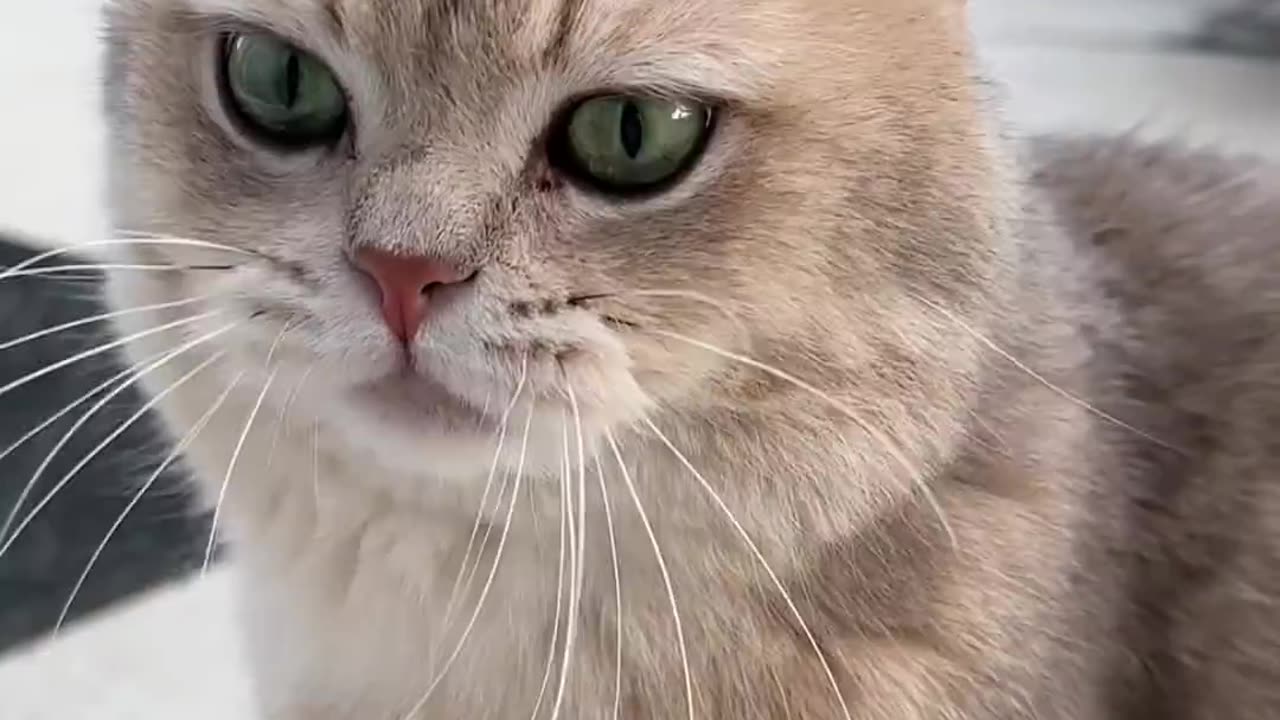Premium Only Content

Cat voice | cats sounds
Cat voice | cats sounds
Cats are known for their diverse and expressive vocalizations, and their voices can convey a range of emotions and intentions. Here are some common cat vocalizations and what they might indicate:
1. **Meowing:**
- **Soft Meows:** Often used as a greeting or a way to get attention.
- **Loud and Insistent Meows:** Can indicate hunger or a desire for something specific.
- **Chirping or Trilling Meows:** Some cats make these sounds, especially when excited or trying to communicate with birds or other animals.
2. **Purring:**
- Usually a sign of contentment, but cats may also purr when stressed or in pain as a self-soothing mechanism.
3. **Hissing and Growling:**
- Defensive sounds, signaling fear, discomfort, or aggression. Cats may make these sounds when feeling threatened.
4. **Yowling:**
- Typically associated with mating behavior in unspayed or unneutered cats. It can also be a sign of distress, pain, or territorial disputes.
5. **Chattering:**
- Some cats make a chattering sound when observing birds or other prey animals. It's thought to be a sign of excitement or frustration.
6. **Screaming:**
- A loud, intense vocalization that can occur during fights or territorial disputes. It's usually a sign of extreme distress.
7. **Whining:**
- A high-pitched, persistent sound that may indicate discomfort, illness, or a desire for attention.
8. **Silent Meowing:**
- Some cats open their mouths without making a sound. This can be a playful behavior or an attempt to communicate non-verbally.
Remember that individual cats may have unique vocalizations, and understanding your cat's specific sounds can enhance your communication with them. Additionally, consider the context, body language, and overall behavior of the cat to better interpret their vocalizations accurately. If you notice sudden changes in your cat's vocalizations or behavior, it's advisable to consult with a veterinarian to rule out any underlying health issues.
-
 LIVE
LIVE
Jorba4
1 hour ago🔴Live-Jorba4- The Finals
36 watching -
 LIVE
LIVE
BBQPenguin_
1 hour agoSOLO Extraction. Looting & PVP
49 watching -
 1:57:14
1:57:14
vivafrei
19 hours agoEp. 280: RFK Jr. Senate Hearing! Activist Fed Judges! Epstein Victims DEBACLE! & MORE! Viva & Barnes
65.5K68 -
 DVR
DVR
Major League Fishing
3 days agoLIVE Tackle Warehouse Invitationals Championship, Day 3
24.5K1 -
 LIVE
LIVE
GritsGG
2 hours agoTop 250 Ranked Grind! Dubulars!🫡
189 watching -
 5:31
5:31
WhaddoYouMeme
1 day ago $3.03 earned$8,000/hr Dating Coach Loses Everything (Sadia Kahn)
15.8K6 -
 LIVE
LIVE
Ouhel
4 hours agoSunday | CoD 4 | CAMPAIGN PLAYTHROUGH | Nostalgia Kick
80 watching -
 13:14
13:14
DEADBUGsays
1 day agoThe Murder of Veronica Kaye | Cold#11
12.3K4 -
 14:53
14:53
Adam Does Movies
19 hours ago $1.31 earnedIs There Any Saving Jurassic World?
12K2 -
 1:28:30
1:28:30
Sports Wars
5 hours agoNFL Week 1 MADNESS, Phillies Karen Goes VIRAL, Angel Reese Suspended As WNBA Is DEAD
24K4